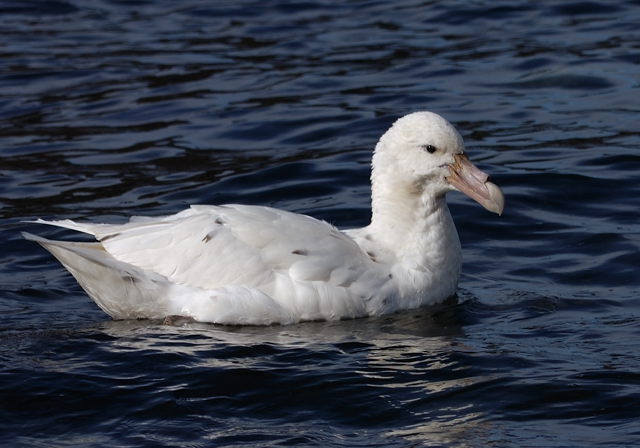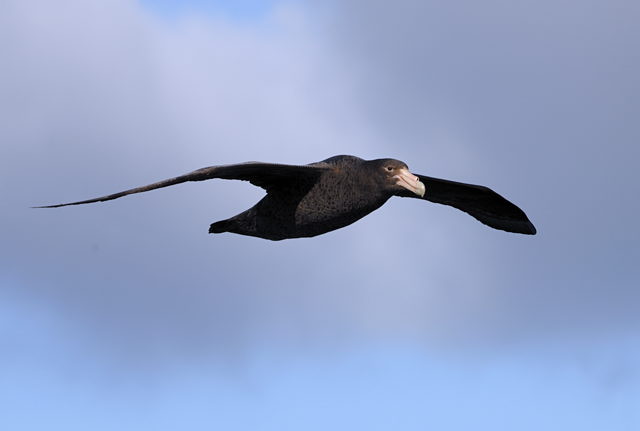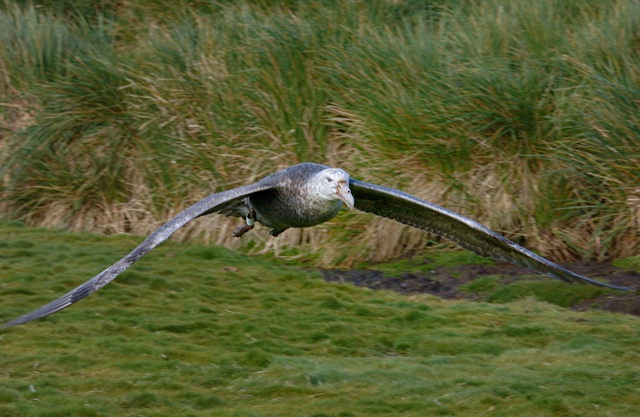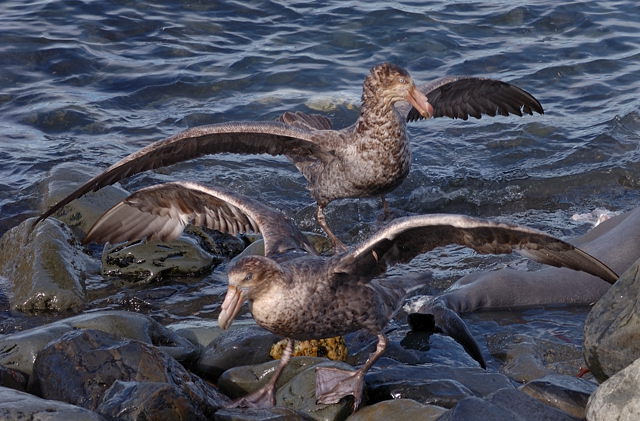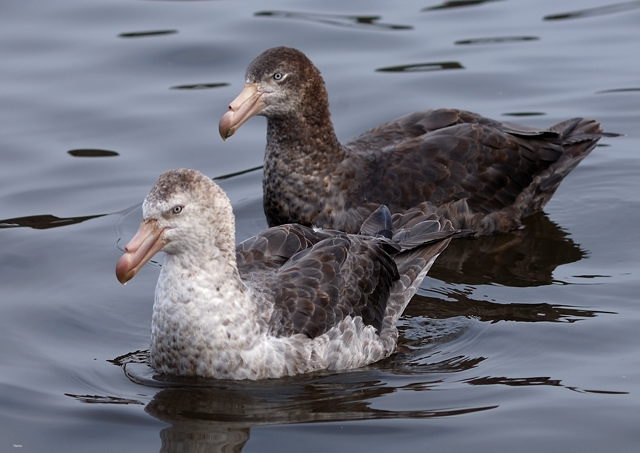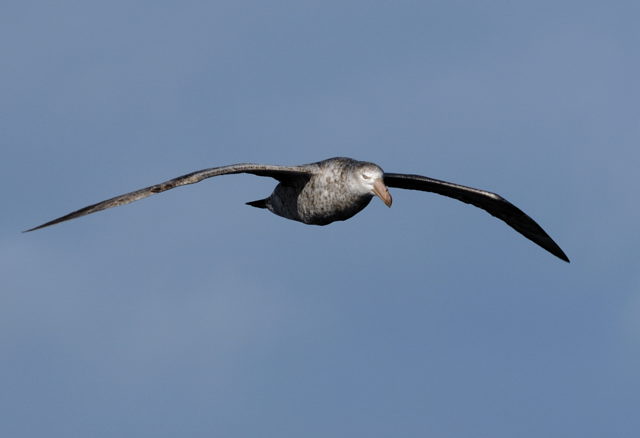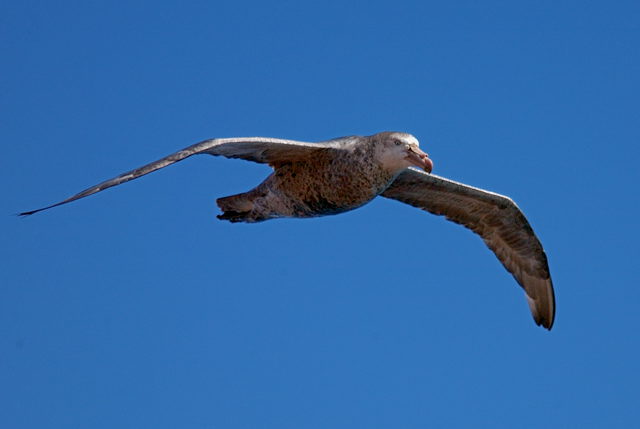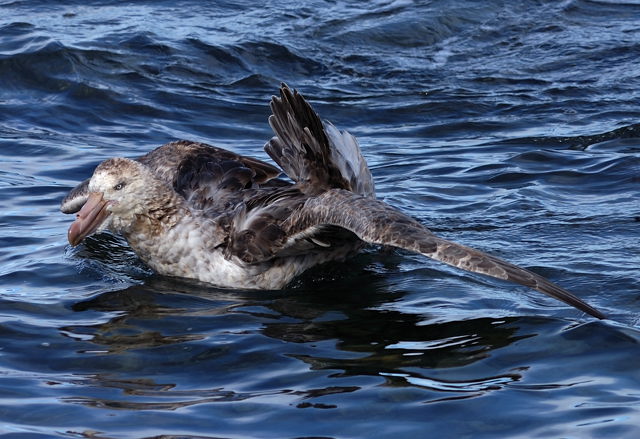Order: Procellariiformes. Family: Diomedeidae
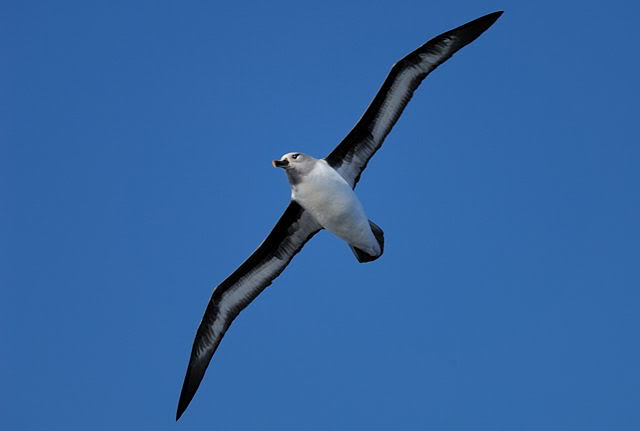
Adult
Description
Size 81 cm. Wingspan 210 cm. Medium-sized albatross with a grey head and neck, black bill, dark grey back and tail and a white breast. Adults have narrow yellow ridge to top of bill with red tip and yellow ridge along base. Head all grey with white crescent behind the eye. Underwing similar to Black-browed Albatross, white with broad black leading edge and narrow black trailing edge.
Juveniles are dark billed with grey heads and collar (more so than in Black-browed Albatross). Underwing all dark, becoming lighter with age.
Distribution
Circumpolar in Southern Oceans. Rare off South African coast, with most records being of Juveniles.
The Grey-headed albatross breeds on sub-Antarctic islands. The main populations are in the South Atlantic Sector of the Southern Ocean. Found in colder waters during the summer, this species moves northward into the subtropics during the southern winter. These birds have been recorded to circumnavigate the globe, sometimes twice, when they are not breeding.
Habitat
Breeding takes place on rocky shores or cliffs, ususally in areas of tussock grass. Otherwise found over the open ocean far from shore, often travelling vast distances.
Diet
It feeds while on the sea surface and undertakes long feeding trips, travelling up to 13,000 km on a single feeding flight. The diet consists of fish, squid and crustaceans.
Breeding
Grey-headed Albatrosses normally breed every two years. The nest is made of a cone of mud lined with grasses and all albatrosses lay only one egg. The egg is laid in mid-October and hatches during December. The male performs almost all of the incubation, which he carries out for the first 70 days. The chick takes three to four days to chip out of the egg and is then guarded for approximately three weeks. Most young depart from their natal nest the following May.
Status
Rare winter visitor. This species is classified as Vulnerable.



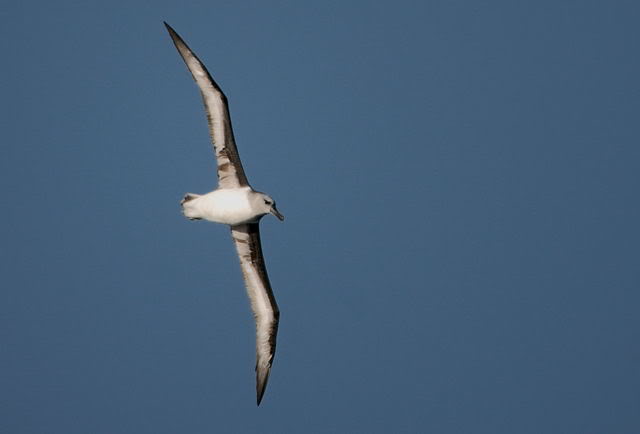
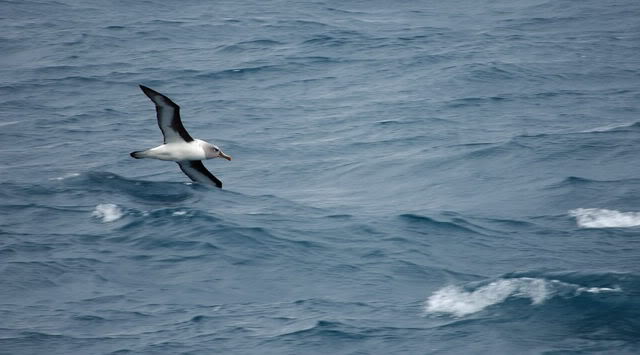

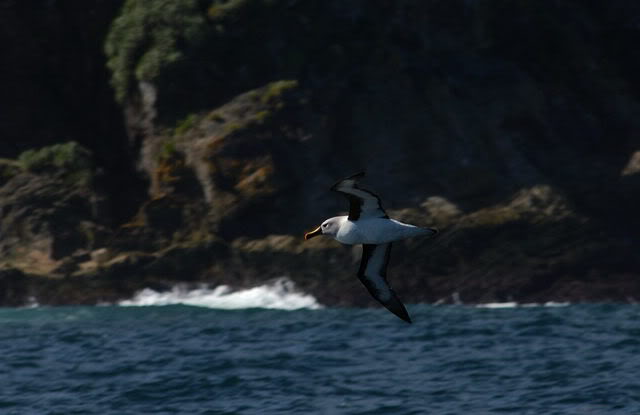

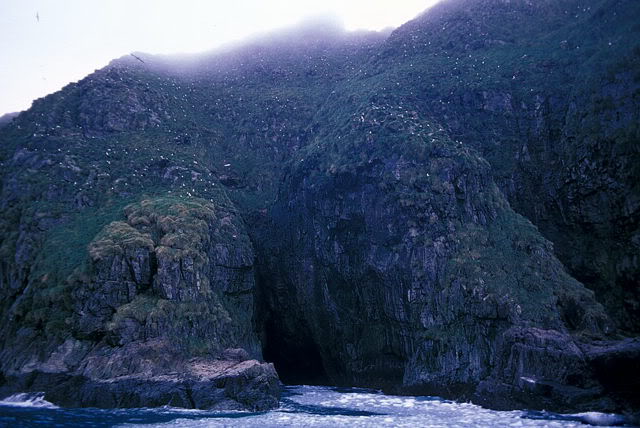
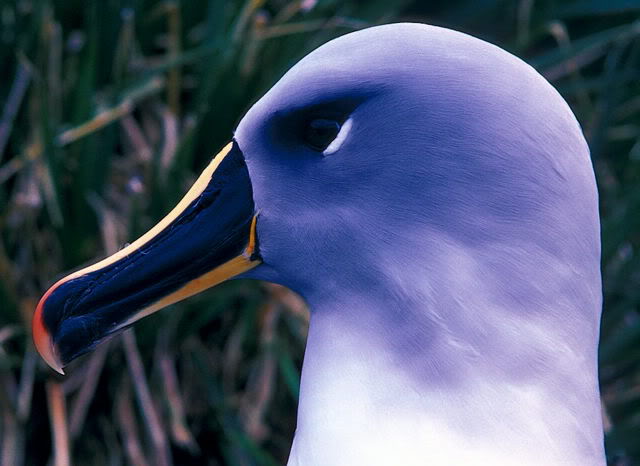
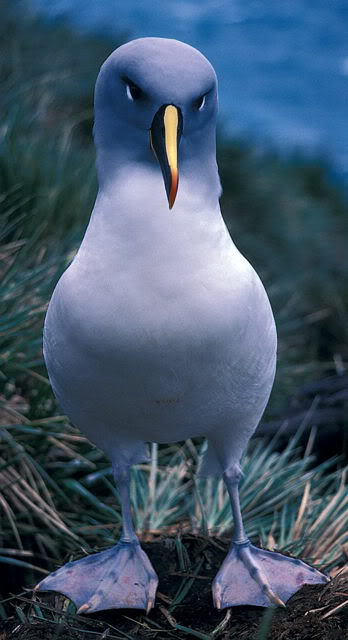


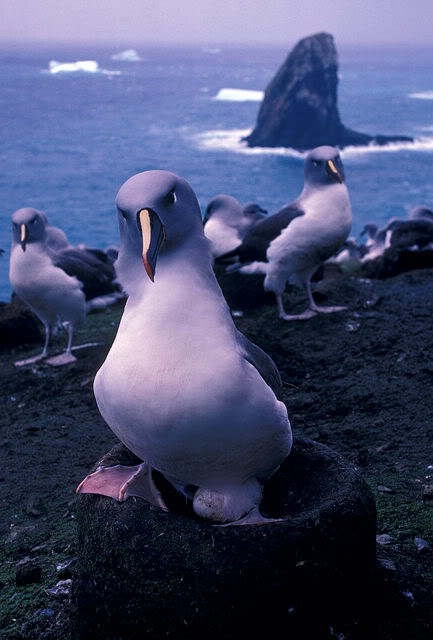

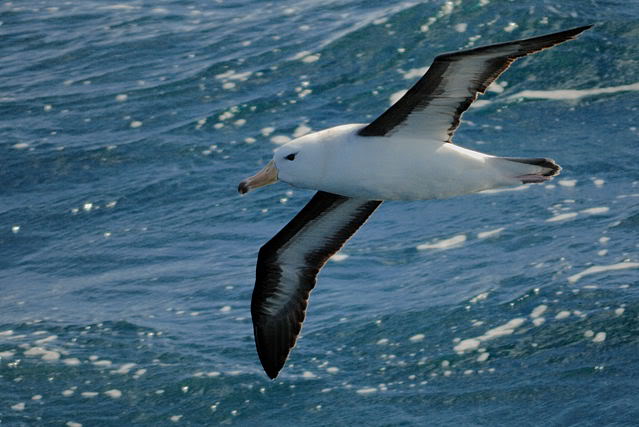
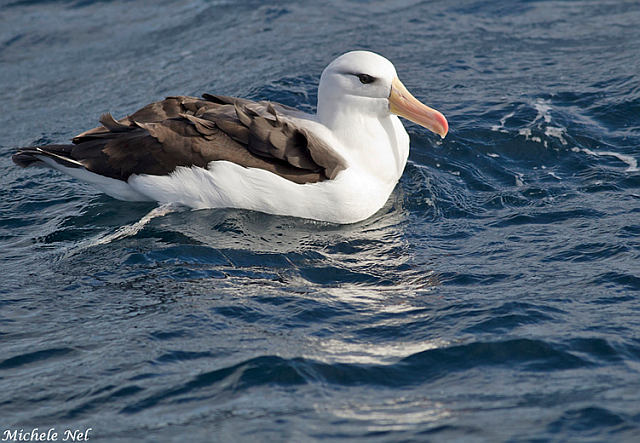 © Michele Nel
© Michele Nel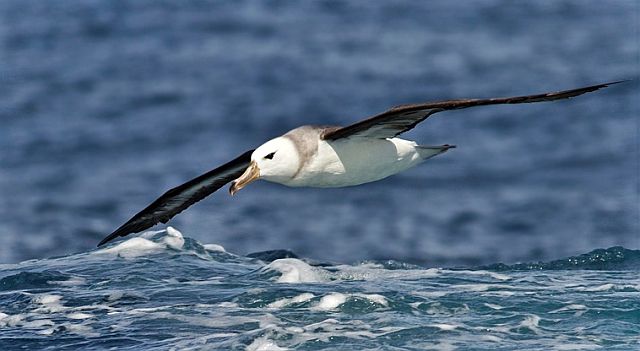 © Michele Nel
© Michele Nel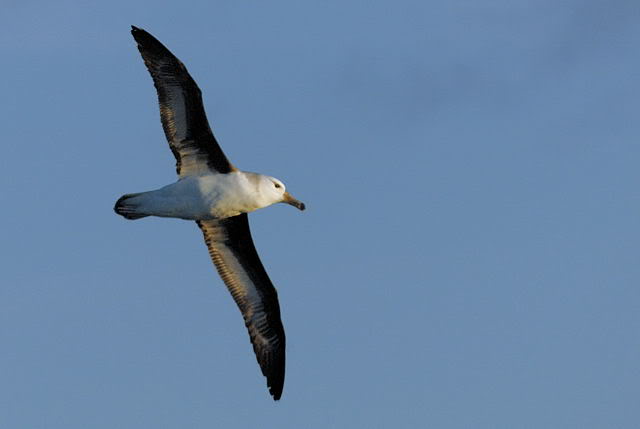
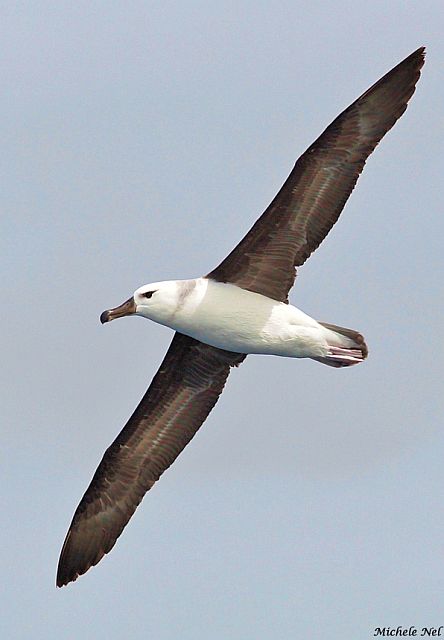 © Michele Nel
© Michele Nel